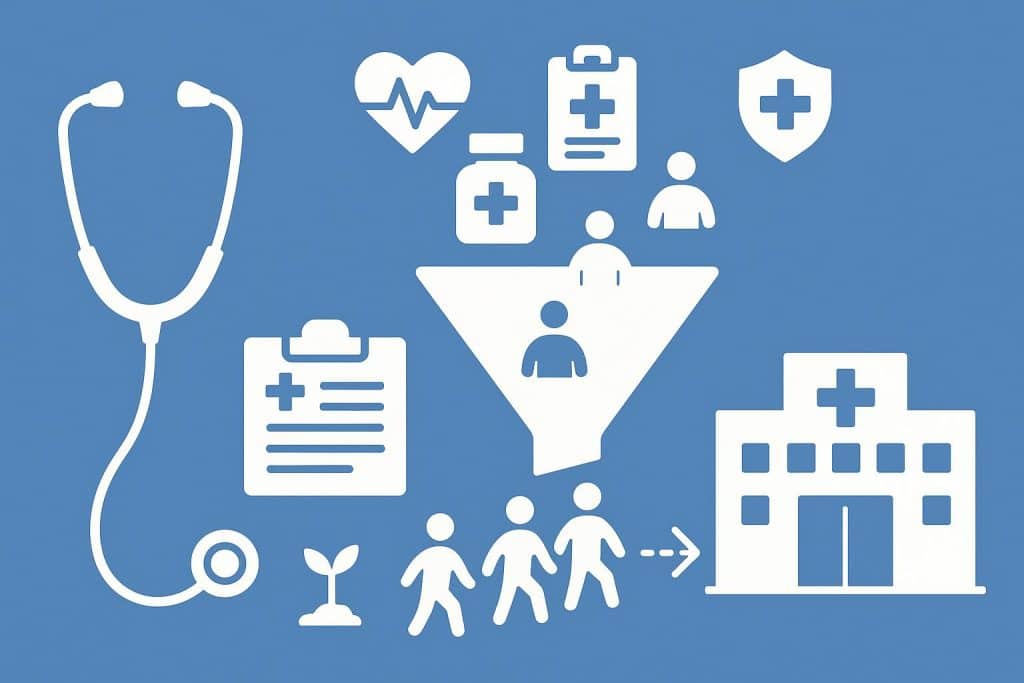Steven Adamczyk, DO, is an emergency medicine physician and medical advisor who became CEO of Wellcore Health in 2024. Based in Bloomfield Hills, Michigan, he oversees daily operations, patient engagement, client relations, and strategy for a telehealth and wellness company. Earlier, he advised Rock Ventures from 2018 to 2021, helping design an employee access funnel and a 17,000-square-foot health center with primary, behavioral health, chiropractic care, and an in-house pharmacy. He has also edited and created medical content for WebChartMD, Adtalem Global Education, and Viral MD. His background in fast-paced ER care and cross-functional leadership gives practical context to Employee Health Funnels Through Integrated Onsite Care. Dr. Adamczyk earned a physiology degree and a DO from Michigan State University and a master of science in basic medical sciences from Wayne State University School of Medicine.
Employee Health Funnels Through Integrated Onsite Care
Organizations are rethinking how employees access mental health and ancillary services. Scattered programs often leave people unsure where to begin, which leads to delays and underuse. Clear structures guide employees from first contact to the right type of care before minor issues become serious problems.
In response, many employers are adopting integrated onsite care models, treating clinics as strategic assets to improve access, control costs, and support workforce well-being. Behavioral health and ancillary services are expanding beyond basic occupational care, positioning onsite clinics as central components of workforce health strategies rather than peripheral benefits.
As these models mature, an employee health funnel turns broad strategy into a clear, repeatable process. It guides employees through defined stages: entry, triage, service matching, and follow-up. Many employers use a single on-site clinic as the intake hub. Employees check in once, and clinic staff use shared records to route them to primary care, behavioral health, or ancillary services. At a large manufacturing site, every visit starts at one check-in desk, creating a predictable intake routine that makes navigation straightforward and sets up coordinated care from the start.
This intake structure is only effective when supported by the right foundation. Integrated onsite care gives organizations the infrastructure that keeps these funnels running. By colocating primary care, behavioral health, and ancillary services in one facility, employers centralize access and connect services both physically and operationally. Employees move through care more easily when employers coordinate these systems.
Triage follows intake. In integrated settings, primary care and behavioral health professionals collaborate to assess needs and determine next steps. Real-time communication avoids the delays common in fragmented systems and directs employees to the most appropriate services when they need them.
Behavioral health access improves when mental health providers share the same environment as primary care. Employees who might hesitate to use external services are more likely to engage when employers present behavioral health as a routine part of workplace care. This integration helps normalize help-seeking and lowers barriers tied to stigma.
While behavioral health integration addresses psychological barriers, ancillary services broaden the funnel’s scope. Physical therapy, preventive care, lab services, and on-site pharmacy access address physical factors that affect overall well-being. Locating these services within the same system gives employees a single, coordinated environment for addressing multiple needs.
Operational workflows keep the funnel functioning day to day. Shared scheduling platforms, aligned procedures, and clear referral channels ensure employees move between services without unnecessary obstacles. These systems turn a conceptual funnel into a consistent, usable process.
Building employee trust is critical to making on-site health funnels effective. Utilization increases when employees believe their data will remain private and when services are communicated clearly. Confidential scheduling systems, strong privacy protections, and culturally responsive care models encourage early engagement and make employees more comfortable using mental and behavioral health resources.
Once trust is established, consistent use, data, and feedback loops drive ongoing improvements. Integrated models allow secure information sharing and aggregated reporting, which help organizations identify bottlenecks, adjust protocols, and maintain privacy standards. These feedback systems keep funnels responsive as workforce needs change.
As employee needs and care delivery change, organizations that build adaptable funnels will be better positioned to add new services, address emerging health priorities, and compete for talent. Treating integration as a strategic framework anchors workforce health planning in a system that can adjust as demands shift.
About Steven Adamczyk
Dr. Steven Adamczyk is a results-driven emergency medicine physician and medical advisor with nearly two decades of experience. He became CEO of Wellcore Health in 2024, leading operations, patient engagement, client relations, and long-term strategy. From 2018 to 2021 he advised Rock Ventures, developing access funnels for mental health and ancillary services and contributing to a 17,000-square-foot onsite health center. He has edited and created medical content for WebChartMD, Adtalem Global Education, and Viral MD. He holds degrees from Michigan State and Wayne State University.
Angela Spearman is a journalist at EzineMark who enjoys writing about the latest trending technology and business news.
